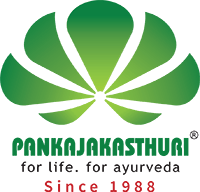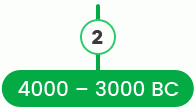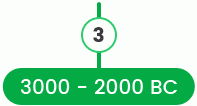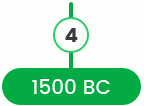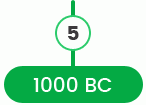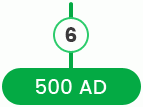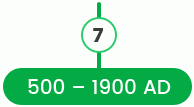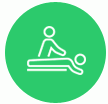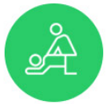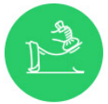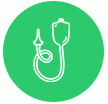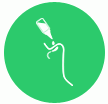Know Ayurveda
Ayurveda – The Science of Life
Ayurveda has its roots in one of the oldest philosophical texts of the world, the Rig Veda, almost 6000 years old. Ayurveda is a science of life (Ayur = life, Veda = science or knowledge) and is fondly called the ‘mother of all healing sciences’.
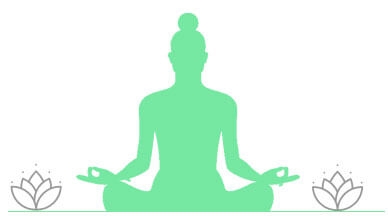
The three—body, mind and soul—are like a tripod, the world stand by their combination; in them everything abides. It is the subject matter of Ayurveda for which the teachings of Ayurveda have been revealed.
Charaka Samhita(1.46-47)
Ayurveda has always sought to prepare mankind for the realization of the full potential of his self through a psychosomatic integration.
The Pillars
According to the Rig Veda, the basic principles of Ayurveda are:
The Panchamahabhut or the five basic elements of the entire creation - earth, water, fire, air and ether.
These five elements in different combinations constitute the three body types or Doshas — Vatadosha (air and ether), Pitta dosha (fire) and Kapha dosha (earth and water).
The Panchamahabhut and the Dosha theories are the guiding factors of Ayurveda as a therapeutic science. The Rig Veda also mentions organ transplants and herbal remedies called soma with properties of elixir.
The Unbroken Lineage of Ayurveda
The knowledge of healing, Ayurveda, was revealed to Rishi Bharadvaja from the great Cosmic Intelligence
The 2nd and 3rd vedas, Sama Veda and Yajur Veda come into being.
The 4th veda, Atharva Veda was authored
Ayurveda was delineated into to two distinct schools: Atreya and Dhanvantari.
The two Samhitas are written
Ashtanga Hridaya by Vagbhatt
The Modern times
The Unbroken Lineage of Ayurveda

The knowledge of healing, Ayurveda, was revealed to Rishi Bharadvaja from the great Cosmic Intelligence
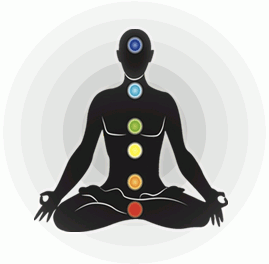
Evidences show that Ayurveda had nurtured almost all the medical systems of the world.
The Egyptians had learnt about Ayurveda long before Alexander. Unani was born after Greeks and Romans come to know about Ayurveda. In the early part of the first millennium Ayurveda spread to the East through Buddhism and greatly influenced the Tibetan and Chinese system of medicine and Herbology. In 800 AD, Ayurveda was translated into Arabic.
In the postmodern age, the popularity of this vibrant tradition of Ayurveda lies in its, subtle yet scientific, approach to heal a person in its totality. It aims, not only at healing the body, but also the mind and spirit, at one go. Perhaps that's the reason behind Ayurveda being the longest unbroken medical tradition in the world, today.
In Ayurveda, Vata, Pitta and Kapha are known as the three doshas, or regulating forces of nature. Ayurvedic wisdom holds that equilibrium or balance of these three doshas is extremely important.
Vata
Vata embodies the energy of movement and is associated with wind. Vata is linked to creativity and flexibility; and movement especially, of the breath, the heart, muscle contractions, cellular mobility and communication through the mind and the nervous system.
Pitta
Pitta represents the energy of transformation and so is associated with fire. Pitta is neither mobile nor stable, but spreads like the warmth of fire that permeates its surroundings. Pitta is closely related to intelligence, understanding, and digestion.
Kapha
Kapha lends structure, solidity, and cohesiveness, and is associated with the earth and water elements. Kapha also embodies the watery energies of love and compassion. This dosha hydrates all cells and systems, lubricates the joints, and moisturizes the skin.
| Dosha | Primary Elements |
|---|---|
| Vata | Air + Ether |
| Pitta | Fire + Water |
| Kapha | Water + Earth |
Ayurveda treatment is branched into two wings –
Sodhana Chikitsa (Purification treatment) and Shamana Chikilsa (Alleviating treatment).
All ayurveda treatments begin with Sodhana Chikitsa, to discard the internal causes of the disease, which are as under:
- Vamana (emesis therapy): Oral medicines are given to induce vomiting.
- Virechana (purgation therapy): Oral medicines are given to induce purgation.
- Nasyam (nasal medication): Medicated oil or powder is administered through the nostrils.
- Vasthy (enema therapy): Medicated oil or decoction is administered through anus.
- Rakthamoksham (blood letting therapy): Impure blood is drained out through various means such as needle-pricking, leaching etc.
The above five procedures are called Panchakarma.
Before undertaking Panchakarma there is a preparatory course consisting of Snehana Karma (oleation therapy) and Swedana Karma (sudation therapy). This course is meant for making the body fit for elimination of toxins.
General types of treatments are:
Self Assessment of your Prakriti
Asthma
Take long pepper, dry ginger and black pepper in equal parts and form a powder. Consume half a teaspoon twice daily for 6-8 months. This will help relieve asthma.
1 teaspoon of turmeric powder with honey for 6-8 months will relieve asthma and related complaints.
Burns
Cool water. The first thing you should do when you get a minor burn is run cool (not cold) water over the burn area for about 20 minutes.
Apply cucumber & carrot or aloe vera paste. Grind cucumber and carrot in a blender or mash them finely in a mortar & pestle.
Common Cough
Fresh juice taken from 4-6 leaves of Malabar Nut with half teaspoon of sugar will relieve cough.
Make a decoction from 30-50 leaves of Holy basil (Oscimum) in 4 glasses of water. Boil it till it becomes 1 glass and have it daily to relieve cough.

Dandruff
Medicated oil of neem leaves and turmeric will solve dandruff problems. Use 50 gms of turmeric and 200 gms of Neem leaves juice and add 200 ml coconut oil. Apply this medicated oil combination on your scalp.
Grind Karuka (Doorva) to make a thick paste and apply on the scalp and wash off after 10 minutes. Rub lime rind on scalp and wash.
Dysmenorrhea
Boil 1 and half glass of water with 1 tablespoon of Fenugreek Seeds (Uluva),Til Seeds (Ellu),Cumin Seeds (Jeerakam) and reduce to half glass. Have daily from 14th day until Periods for 3 months.
Add a little sugar for taste, but avoid milk. Ginger can effectively reduce period pain, as it plays a key role in lowering the levels of prostaglandins.
Fresh Cut Wounds
Neem and Tulsi (Margosa and Basil): Grind these two wonderful herbs together in a paste and apply a thick layer on your wound.
Apply Vernonia Cinerea (Poovankurunnila) leaves juice to fresh injuries which heals immediately.
Hair Fall
Make a medicated oil using, fresh juices from henna leaves, trailing eclipta leaves, hibiscus (Shoe-flower) leaves and curry leaves with an equal quantity of coconut oil. Apply on scalp for 15 minutes before bath for 3-4 months.
Apply 5 - 10 ml of virgin coconut oil to the scalp daily.
Hypertension
Consume 10 gms of Dhub grass paste daily. This will bring down elevated BP level.
Apply Vernonia Cinerea (Poovankurunnila) leaves juice to fresh injuries which heals immediately.
Joint Pain
Have one teaspoon of fine cinnamnon powder with honey twice daily before food for 3-4 months.
Make a decoction from 25 gms of greater galangal in 4 glasses of water. Boil it till it becomes 1 glass. Drink this mixture daily for 4-6 months.

